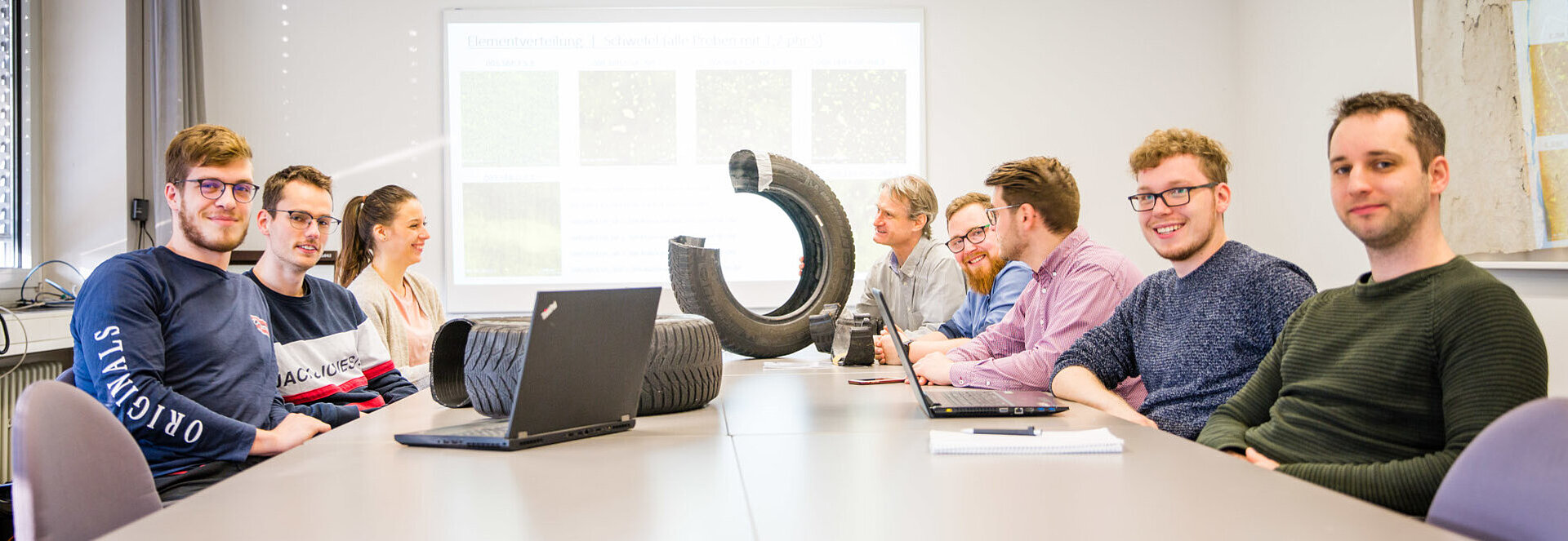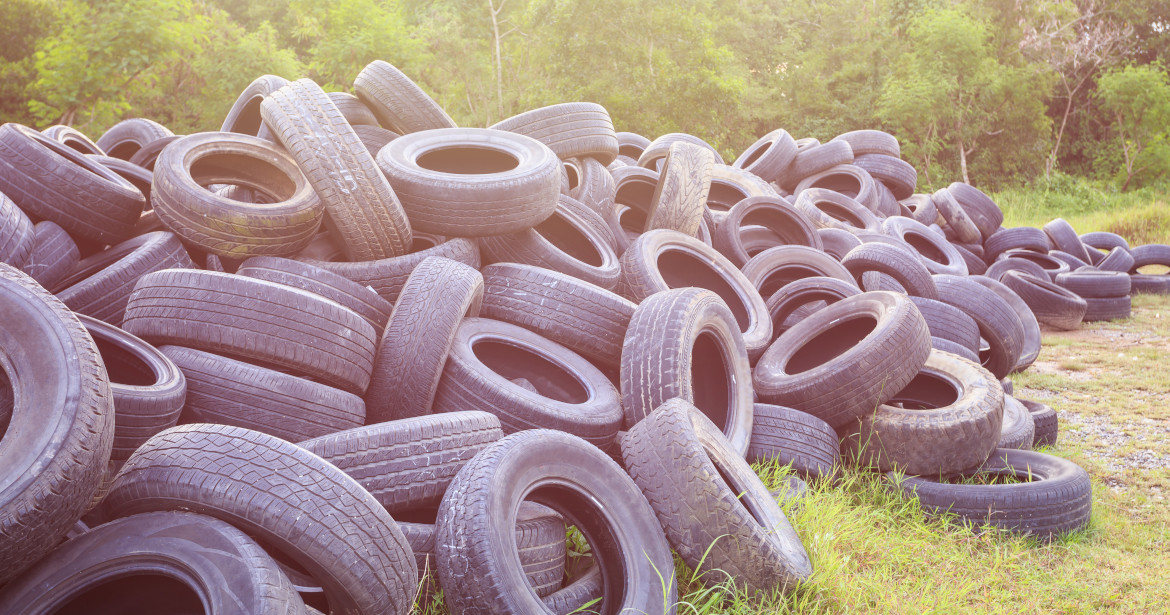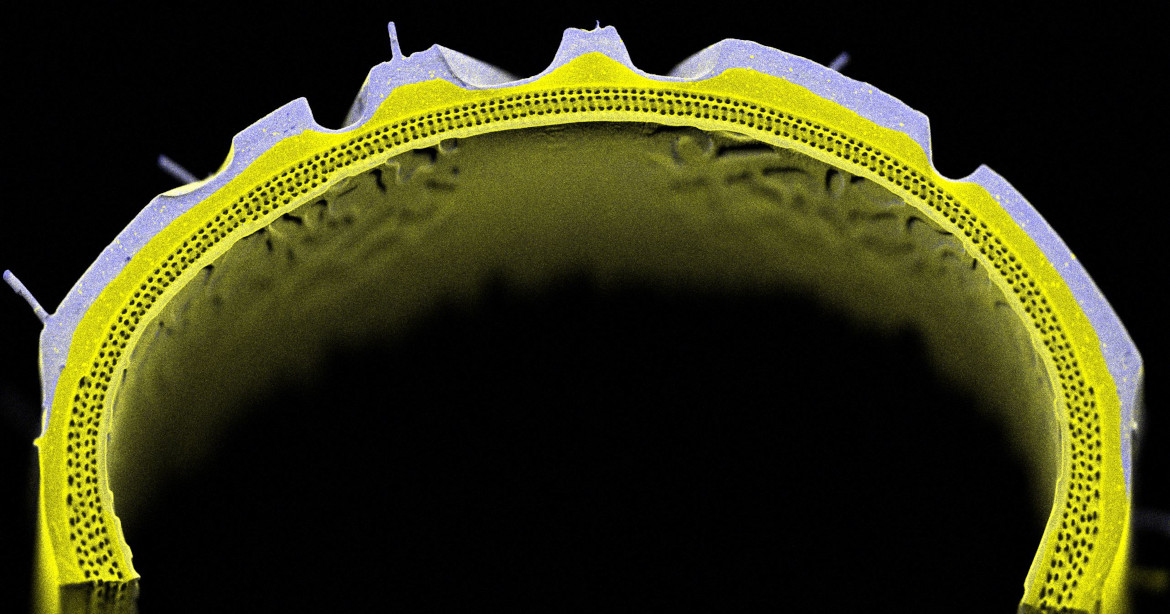Recycling of Elastomers
One of today’s major lifestyle issues is individual mobility. There are currently more than 330 million cars on European roads, which produces a sum of 3 million tons of end-of-life tires every year. This number is expected to increase in the future.
Large numbers of these tires are burned in cement factories for energy recovery. However, if the goal is to create a circular economy, this should be the last option. Material recovery is the gold standard. Many tire companies are already working hard to try and solve this issue. The reality is, however, a rocky road. Why?
Why Is Recycling Tires So Difficult?
Elastomers, and especially tires, consist of a variety of different materials in order to ensure they have the properties demanded of them. On top of that, unlike plastics, elastomers do not melt and cannot be recycled easily. Therefore, special methods must be used.
Researchers at FHWS are pursuing this by reincorporating the ground rubber powder into a virgin rubber compound. Thus, the used tire, for the second time, finds its way back onto the road, where it belongs. This is circular economy and the idea of cradle-to-cradle!

So far it sounds easy—but for technical reasons, it is not. A tire is a very complex composite with high requirements, e.g., for safety (wet grip, breaking distance), sustainability (rolling resistance, petrol consumption), and ecological qualities (abrasion resistance). Further developments, like electric mobility and autonomous driving, present challenging production issues for “the tire of the future.”
What is the challenge in detail? The ground rubber particles have to be reincorporated into the virgin compound in a particular way. This means: identification of purity and grade, optimization of the mixing process, and functionalization of the rubber particles. These are only some of the issues the research group is working on. Therefore, physical, chemical, as well as engineering aspects have to be considered—altogether a very complex and interesting combination of natural and engineering sciences!


Researchers and Industry Working Hand in Hand
The research group consists of students from the bachelor’s course “Plastics and Rubber Engineering” and from the master’s course “Product Development and Systems Design,” as well as of employees from the faculty. The group is currently working together with scientists at the University of Twente, including Prof. Anke Blume, Chair of Elastomer Technology and Engineering (ETE), and Ass. Prof. Dr. Fabian Grunert. Dipl.-Ing. (FH) Stefan Frosch is also working there on his PhD, jointly supervised by Prof. Herrmann. He is researching how to get better insights into recycled rubber material by using the micro (or local) X-ray fluorescence method to understand the effects of ground rubber in rubber compounds.
In this context, the group is also collaborating with different companies in order to focus on the goal of improving the recycling process as a whole—from the first appearance of the end-of-life tire up to its second life. Their research is supported financially by the German Rubber Association (DKG).
Working at a University of Applied Sciences
- What is a University of Applied Sciences?
- Getting to know Universities of Applied Sciences as a visiting researcher.
- Doing your PhD or becoming a professor at a University of Applied Sciences
How Does the Group Do This?
In laboratory trials—for example, as part of research for a bachelor’s thesis—the members of the group produce their own ground rubber in a defined way under laboratory conditions. They then mix their own tire compounds, measure their properties, and if necessary, improve them via compounding. Analytical methods, like thermal analysis, microscopy, or mechanical tests, are typical tools for these investigations.


In a further project associated with the group’s research, a student on the Mechatronics degree program, Laura Suhl, developed a new measuring method (the Dynamic Indentation Tester, or DIT) to obtain proper information about the recycling process, and was awarded the FutureIng Award “Engineering Talent 2019.” Further prizes were won by students Anne Schulz (2014), Artur Wekerle (2018), and Tim Neckermann (2020) for their diploma, bachelor’s, and master’s theses. They were all recognized by the German Rubber Association (DKG) for their work on the recycling of elastomers via ground rubber.
Theoretical and Experimental Trials Validate Each Other
Besides experimenting, the group also follows the theoretical path. With the help of computer simulation, the properties of ground rubber loaded compounds can be calculated and visualized. This helps the researchers to answer questions that are very time consuming and not easy to recognize under laboratory conditions. Therefore, simulation is a very helpful tool to increase speed and precision.


Following in the Footsteps of W. C. Röntgen
The group works in a location that is rich in history. In 1895, Wilhelm Conrad Röntgen discovered X-radiation in the laboratories they are currently using for their own experiments. The micro X-ray fluorescence method that the group works with is a new technology, used to detect chemical elements in the recycling process. In this sense, they are continuing Röntgen’s discovery from more than 125 years ago. Röntgen was awarded the first Nobel Prize in Physics for his work. In the buildings near the Röntgen Memorial, the research group is highly motivated to follow in his prominent footsteps and to reach their goals. In other words: the X-ray is back!
If you would like to find out about opportunities relating to the project, contact Prof. Volker Herrmann. More information is available on their website.





